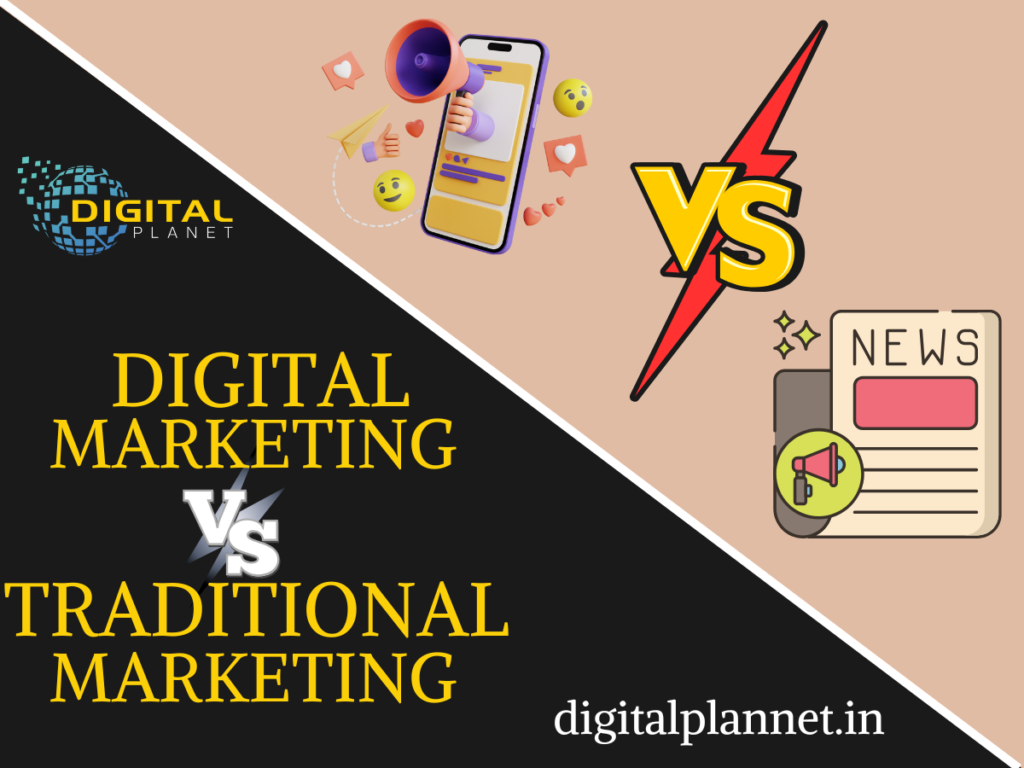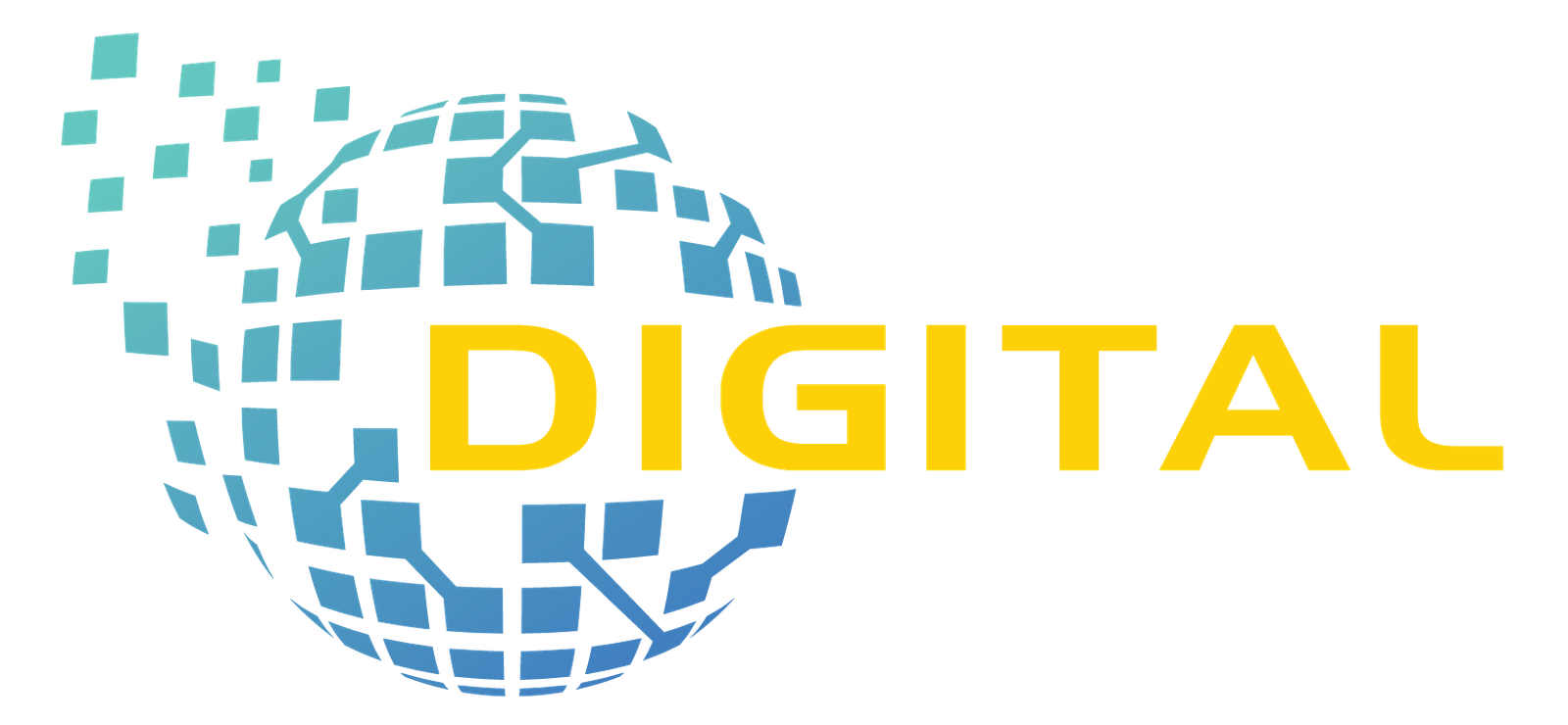Digital Marketing vs Traditional Marketing: A Comprehensive Comparison:

In today’s competitive business landscape, companies must choose the right strategies to promote their products or services. Two significant approaches digital marketing and traditional marketing play crucial roles in this arena. But which one offers more value for businesses in 2024? In this article, we delve deep into their differences, strengths, limitations, and use cases, helping you decide which is best suited for your business needs.
What is Digital Marketing?
Digital marketing refers to the promotion of products, services, or brands through online channels. This includes search engines, social media platforms, websites, email campaigns, and other web-based methods. It relies on real-time data and analytics to fine-tune campaigns, ensuring businesses get the maximum return on investment (ROI).
Some common types of digital marketing are:
Search Engine Optimization (SEO): Improving website visibility on search engines.
Pay-Per-Click (PPC): Paid advertising, such as Google Ads.
Social Media Marketing (SMM): Promotion through platforms like Instagram, Facebook, and LinkedIn.
Content Marketing: Using blogs, videos, and infographics to engage audiences.
Email Marketing: Sending personalized offers and newsletters directly to customers.
Advantages of Digital Marketing:
Global Reach: Businesses can reach customers across the globe.
Targeted Advertising: Segment campaigns by demographics, location, interests, etc.
Real-Time Performance Tracking: Analytics tools provide instant feedback on campaigns.
Cost-Efficiency: Digital campaigns are often more affordable than traditional ads.
Higher Engagement: Interactive ads foster more user interaction and brand loyalty.
What is Traditional Marketing?
Traditional marketing relies on offline methods to reach consumers. This approach includes TV commercials, print media (newspapers and magazines), radio ads, billboards, flyers, and direct mail campaigns. It has been the backbone of advertising for decades and continues to play a role in industries with a broader target audience.
Some examples of traditional marketing include:
Television Commercials: Ads during TV shows or live events.
Radio Ads: Promotions broadcast on local or national radio stations.
Print Advertising: Posters, brochures, or magazine spreads.
Billboards: Large-scale advertising in high-traffic areas.
Events and Sponsorships: Engaging consumers at exhibitions and community events.
Advantages of Traditional Marketing:
Broad Audience Reach: Especially effective for local campaigns.
Credibility and Trust: Printed material often feels more authentic and lasting.
Tangible Marketing: Consumers can physically engage with flyers, brochures, and coupons.
Passive Consumption: TV and radio ads capture audiences during leisure time.
Brand Recognition: Long-established mediums like TV build solid brand recall.
Key Differences Between Digital Marketing and Traditional Marketing:
| Aspect | Digital Marketing | Traditional Marketing |
|---|---|---|
| Reach | Global, via the internet | Limited to specific locations or regions |
| Targeting | Precise targeting through data analytics | Broad, non-specific targeting |
| Cost | More affordable with scalable options | Higher costs, especially for TV and print ads |
| Measurability | Real-time metrics and analytics | Difficult to measure accurately |
| Engagement | Interactive (e.g., likes, shares, comments) | Passive (e.g., viewing or listening) |
| Adaptability | Easy to modify campaigns | Changes are costly and time-consuming |
| Longevity | Content may expire quickly (e.g., social media) | Printed ads can last longer (e.g., magazines) |
When to Use Digital Marketing:
Digital marketing excels when:
Your target audience is active on social media or online platforms.
You need immediate feedback and results from campaigns.
You want to leverage personalized offers for specific customer segments.
Budget constraints make traditional marketing channels less feasible.
Your goal is to build online communities and foster brand interaction.
Industries Benefiting from Digital Marketing:
E-commerce and Retail
Technology and Software
Education and E-learning
Tourism and Hospitality
When to Use Traditional Marketing:
Traditional marketing works best in scenarios where:
Your audience includes older generations who engage more with print or TV ads.
You are building local brand awareness through radio or community events.
Large-scale product launches or events require mass media attention.
Face-to-face interaction and tangible brand materials are preferred.
The business model relies on creating long-term brand recognition.
Industries Benefiting from Traditional Marketing:
Automotive Industry
Real Estate
Luxury Goods
Healthcare Services
The Future: Integrating Digital and Traditional Marketing:
In 2024 and beyond, businesses increasingly adopt a hybrid approach—combining the best of both digital and traditional marketing strategies. This integrated model allows brands to create a multi-channel experience that caters to diverse audience segments.
For example:
A local store may use billboards for awareness and Google Ads to target online customers.
Events and trade shows can be supported by social media campaigns to maximize attendance.
TV commercials can include QR codes to lead viewers to websites or special online offers.
The key is to maintain consistency in branding across all channels while leveraging the strengths of each method. This ensures that businesses remain relevant and competitive in a rapidly evolving marketplace.
Conclusion: Which One Should You Choose?
Both digital marketing and traditional marketing offer unique benefits, and the best approach depends on your business goals, audience, and budget. Digital marketing is ideal for cost-effective, real-time campaigns, while traditional marketing still has a place in local outreach and brand credibility. An integrated strategy that uses both methods will deliver the best results in the long run.
Related Posts
- Best AI for Video Generation Free 2025: Ultimate Guide + Top Picks
- How to Get Invite Code for Sora 2 (2025): The Ultimate Step-by-Step Guide
- Influencer Marketing for Travel Industry 2025
- Top 10 Motivational YouTubers in India-Must Follow in 2025
- Boosting Health & Fitness Brands with Influencer & UGC Marketing
